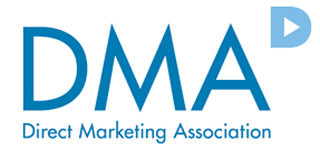
Free Doesn’t Usually Mean Free
There’s lots of strings attached to offers of free products and services.
When does a product truly meet the requirements for a Made in USA label?
Patriotism can be an incredibly effective marketing tool. Heck, some people are even willing to pay more for a product that’s advertised as made in the U.S. But what exactly does “Made in the USA” mean?
These are the kinds of murky waters we’re wading into when we consider what it means for a product to be advertised as “Made in the USA”
What does the law say, you ask? Well, according to the FTC, if a product is advertised as “Made in the USA,” (which can be done directly or implicitly using, for example, images of American flags or U.S. maps, or by describing the “true American quality” of the work) then “all or virtually all” of the product must have been made in the United States. But with no definitive definition of what “virtually all” means, there’s some wiggle room for advertisers.
The FTC takes the position that in order to advertise a product as “Made in the USA,” “the product should contain no – or negligible – foreign content.” That is to say, all significant parts and processing that go into the product must be of U.S. origin, and the product’s final assembly or processing must take place in the U.S. This means the answer to the first four questions raised above is “no, those products are not considered to be made in the USA.”
Oh, and that product made in Guam? According to the FTC, “United States,” includes the 50 states, the District of Columbia, and all U.S. territories and possessions, including Guam.
It’s also important to note that express Made in USA claims don’t have to use those exact three words. According to the FTC, other terms such as Built in the USA and Manufactured in the U.S., for example, communicate the same message and thus can only be used by marketers when their products are “all or virtually all” made here.
But what about marketing a product as something slightly less than Made in the USA, such as “Made in USA of U.S. and Imported Parts”? Well, that’s what the FTC calls a qualified Made in USA claim and it’s allowed when a product has a significant amount of U.S. content or U.S. processing but doesn’t quite meet the “all or virtually all” standard described above. Other examples of qualified Made in USA claims are: “60% U.S. content,” “Couch assembled in USA from Italian Leather and Mexican Frame,” and “Assembled in the USA.” The key to making a qualified Made in USA claim, though, is to make sure the qualifying language is not buried in fine print. It needs to be clear, prominent, and understandable so that consumers can make sense of the label or ad.
If you want to read the FTC’s Made in the USA policy statement, you can do so here. More on TINA.org’s coverage of Made in the USA issues can be found here.
There’s lots of strings attached to offers of free products and services.
The Direct Marketing Association (DMA) is a trade group made up of all those pesky companies we have to thank for telemarketing, spam, and junk mail, among others. The group…
The Entertainment Software Association (ESA) is an association based in D.C. that is exclusively dedicated to serving video game companies. The group lobbies Congress and other legislative bodies extensively in…

